How to photograph a solar eclipse
Learn how to photograph a solar eclipse on camera with our comprehensive guide.
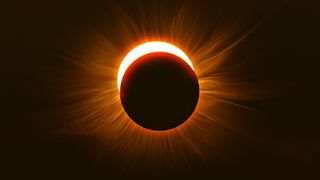
The last North American total solar eclipse was April 8, 2024, so read on to find out how to photograph the next solar eclipse. We also have an accompanying guide on how to photograph a solar eclipse with a smartphone and if you need to know how to use your solar eclipse glasses, we have a page for that too.
Although the recent eclipse in 2017 might have you thinking otherwise, a total solar eclipse is a rare event that you may only get to witness a few times in your lifetime. So, planning and preparation are vital if you're hoping to capture some incredible shots. You'll need access to good equipment, along with an understanding of composition and how to make the most of your camera settings ahead of time since you'll only have a few minutes to take your pictures on the day. This guide will take you through all the steps you need to take to set yourself up for success.
A total solar eclipse is one of nature's most spectacular phenomena, and it's only made possible through a series of cosmic coincidences. Although the sun is around 400 times larger than the moon, it is also around 400 times further away, meaning that the two celestial bodies appear to be around the same size as they're viewed from Earth. When the moon's orbit occurs in just the right place, this allows it to completely block out the sun for a short period of time, known as totality.
Learn all about the strange eclipse phenomena and the stages of the total solar eclipse for more information about the astronomical event.
Solar eclipse kit deals April 2024
- Amazon: Celestron solar eclipse glasses
- Walmart: Solar glasses, binoculars and filters available
- Best Buy: Solar glasses, viewers, telescopes and binoculars
- B&H Photo Video: Single and multipack eclipse glasses
If you're lucky enough to find yourself in the path of totality, which represents the center of the moon's shadow as it falls across Earth, then you're in for real spectacle. Expect the temperature to drop, the birds to go wild and a sense of wonder and excitement to spread through the people around you as you experience those few minutes of darkness.
For photographers, there are many exciting shots to be had. Either side of totality you'll experience the partial phases of the eclipse for around 60 to 80 minutes, during which time the sun will start to appear like a crescent. Make sure to wear fully certified solar eclipse glasses to protect your eyes and use a solar filter to protect your camera when viewing these partial phases of the eclipse. Next comes the diamond ring, when the last bead of light remains peeking out from behind the moon. Then enters the star of the show — the sun's corona. This is the outer atmosphere of the sun and it's usually concealed by the brightness of the sun's surface, but it will be on full display during the short period of totality. Read on to find out how you can capture phenomenal shots of all these phases for yourself.
Useful gear for photographing the eclipse
Need something to equip your camera lens or telescope with? Here are three top products we recommend for photographing a solar eclipse.

White light filter designed to clamp onto binoculars, camera lenses and monoculars, this filter is well built and provides great views of the sun.
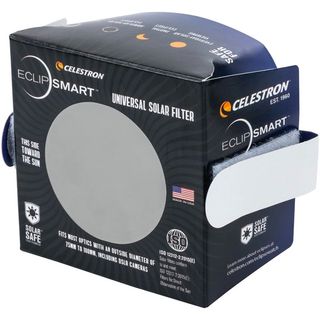
A cheap and cheerful solar filter to attach to your telescope, camera lens or spotting scope for easy solar viewing, but it's not designed to last forever.
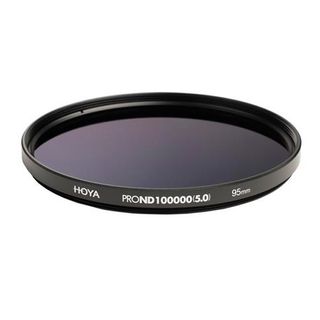
Made specifically for solar photography, this filter can screw onto the front of camera lenses and telescopes, although it doesn't claim to block any of the harmful rays.
Equipment
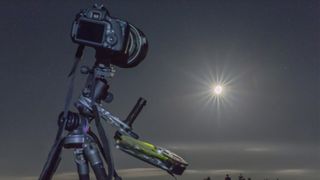
You will need:
- A DSLR or mirrorless camera with full manual control.
- A super-telephoto lens — at least 200mm, but the longer, the better.
- A sufficiently strong solar filter to prevent damage to your gear during the capture.
- The best tripod you can afford. A stable tripod is required when shooting in low light, but this is even more important when shooting at a long focal length because the motion of the slightest vibration or gust of wind is multiplied. Invest or borrow the strongest tripod you can — it needs to be as solid as a rock.
- Shutter release. This can be a cable plugged into your camera or a remote control that allows you to capture images without physically touching your camera. For the sharpest possible image, this is an important gadget to have in your arsenal.
- Eclipse glasses are essential for looking at the sun with the naked eye. Do not look at the sun without protection.
- Take several spares — at least one extra fully charged battery and an empty SD card. Maybe several! It would be heartbreaking to go to the effort and expense of the trip of a lifetime only to be let down by some inadequate gear.
Choosing a filter
There are several manufacturers offering specialist solar filters, such as Thousand Oaks Optical, Seymour Solar and Baader. These typically comprise a screw-in thread for the front of your lens and a protective sheet of film. Solar filters are specifically designed for this task and will block UV and IR light beyond the visible spectrum — if in any doubt, opt for one of these.
Some manufacturers of regular camera filters, such as Kase, Lee, Formatt Hitech and Nisi, make neutral density filters of sufficient strength that they can be used for solar photography as well as other long-exposure photography. Look for 16-stop, 18-stop or 20-stop neutral density filters. Weaker strength neutral density filters will be available, such as a 4-stop or an 8-stop, but these will not offer enough protection — you must only consider filters of 16-stop and above.
In order to find the correct size filter for your lens, look for the thread notation which is usually displayed on the front or side of your lens, sometimes next to the Ø symbol. For example, 82mm or Ø82 means that your lens requires a filter with a diameter of 82 millimeters.
Choosing a lens
You will need a substantial focal length to get a close-up of the solar eclipse. The most common telephoto lenses tend to top out at 200mm or 300mm, very respectable focal lengths, but still, you're wasting precious pixels on empty space. Consider investing or renting a lens with a longer focal length for your mission. You could also look at a teleconverter, which is a secondary lens that fits between your lens and the camera body to magnify the center of your image. These typically come in factors of 1.4x, 1.5x or 2x magnification. For example, a 70-300mm lens with a 2x teleconverter offers a maximum focal length of 600mm.
Here is how a selection of different focal lengths look on the Nikon D850, a full-frame DSLR camera:

200mm

300mm

600mm

1,200mm
It may seem tempting to go for the closest, most extreme crop. However, shown above are just the partial phases. The real attraction of a total solar eclipse is the chance to see and image the Sun's corona, which is a halo of whitish light around the sun that's only visible during totality. Use a tight crop and you risk cutting off the Sun's corona. You'll also find yourself having to adjust your composition constantly — it will surprise you just how quickly the sun will move through the frame. You will find that something between 400mm and 800mm is the best choice for the shot — striking a balance between filling your frame and not having to recompose your shot as often.
The types of solar eclipses
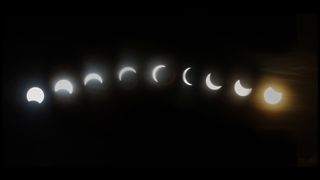
A total solar eclipse is the most impressive type of eclipse. It occurs when the moon is close enough in distance to the Earth to completely obscure the sun. The path of totality is narrow, so although a total solar eclipse occurs somewhere on Earth every 18 months or so, it takes an average of around 375 years to reoccur on the same spot.
An annular solar eclipse occurs when the moon's elliptical orbit takes it a bit further away from Earth, so it doesn't appear large enough to completely obscure the sun, instead leaving a bright 'ring of fire' around the edge. They occur on average every 18 months, and on the same spot around every 224 years.
A hybrid solar eclipse is a rare phenomenon where the eclipse transitions between an annular and total solar eclipse due to the curvature of the Earth affecting the perceived size of the moon. They make up only around 5% of all solar eclipses and occur around once a decade.
A partial solar eclipse is when the moon only covers some of the sun, making it look like a bite has been taken out of the side. During total or annular solar eclipses, people can see this when they're observing from just outside the path of totality, but partial solar eclipses also occur independently when the moon rests slightly above or below Earth in its orbit.
Safety
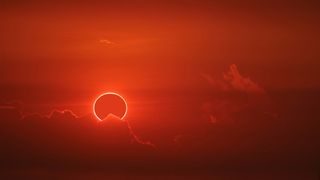
It's important to consider the safety of you and your equipment when observing and photographing the solar eclipse. Make sure you never look directly at the sun without wearing proper solar eclipse glasses to protect your eyes during the partial phases of the eclipse, even if you're viewing through a telescope or binoculars. Doing so runs the risk of burning your retinas, which can cause instant and irreversible blindness, so be careful to ensure your kids take heed of this advice too.
During the short period of totality, which will last as long as four and a half minutes in some locations, it's safe to remove your eclipse glasses, but this only applies if you're in the path of totality where the sun will be entirely covered by the moon. You should replace them as soon as the diamond ring starts to appear again, signaling that totality is over.
The same rules apply to your photography equipment, which is also sensitive to the powerful rays from the sun. Luckily, the film used for solar viewing glasses is also available as a solar filter for your lens from specialist retailers. Solar film is the equivalent of 20 stops of neutral density, significantly reducing the amount of light getting through. Pointing a telephoto lens at the sun without protection for your gear is a terrible idea. A telephoto lens magnifies the intensity of sunlight and, in extreme cases, can melt your sensor!
In 2017, photographer Sean MacDonald sacrificed a Canon DSLR to prove this point. With a 400mm lens pointing directly at the sun and unfiltered, the camera began smoking within seconds.
When and where to see a solar eclipse
Solar eclipses are rare to occur in a specific location, and a total solar eclipse is even rarer. Unless you're lucky enough to live in the path of totality, you'll need to travel to a suitable viewing location.
Given their predictable nature, various websites and apps can help you find and map the path of totality on April 8. Eclipse chaser Xavier Jupiter's Interactive Google Map and TimeAndDate are the most popular. Specialized maps come from GreatAmericanEclipse.com and simulations of what you'll see from specific locations come from Eclipse 2024.
Upcoming total solar eclipses
August 12, 2026
Europe will next experience a total eclipse in 2026, which will be visible from Greenland, Iceland and Spain. Weather permitting, several large cities will see totality, including Reykjavik, Bilbao, Zaragoza and Palma. Most of western Europe will experience a partial eclipse.
August 2, 2027
The path of totality for this 2027 eclipse travels across North Africa and the Middle East before terminating over the Indian Ocean. Egypt will see the longest period of totality, up to 6 minutes 22 seconds, near the city of Luxor, making this the second-longest solar eclipse of the century. Given the climate, time of day and exceptional length of totality, this is likely to be the most favorable viewing position for any solar eclipse in this decade.
July 22, 2028
The final total solar eclipse of the decade will occur in 2028, when Australia and New Zealand will witness an eclipse with a maximum totality of over five minutes. This eclipse will be notable for passing over Sydney.
November 25, 2030
Here's a path of totality that begins at sunrise off Namibia's Skeleton Coast and ends in Queensland, Australia. So the choice is an early morning totality in Namibia, Botswana, South Africa or Lesotho, or a sunset eclipse from South Australia, New South Wales or Queensland. It will last about two minutes.
Preparation
Clean your gear
Photographing strong light means any specks of dust will be seen on your image. Invest some time and money cleaning your equipment before your trip. You should probably clean your camera sensor, too. If you're uncertain how to do this, find out if your local camera shop offers a professional cleaning service.
Get there early
You will have established well ahead of time where you need to be and when. Arrive with plenty of time to set up, checking there is nothing obscuring your view.
Level your tripod
You will be recomposing your frame every few minutes so ensure your tripod is positioned somewhere stable, level, and ideally as far away from other people as possible. The last thing you want is a clumsy eclipse observer bumping into your tripod in the dark.
Fit your solar filter
Before composing your shot, remove the lens cap and fit your solar filter.
Compose your shot
Use your camera's screen to line up your image. Do not use the optical viewfinder. You can always crop later, so it isn't critical to have the sun in the center of the frame, plus, it is in constant motion.
Finding focus
Getting sharp and accurate focus is of critical importance, but you cannot always rely on autofocus to do this correctly. Take a test shot and zoom in using your camera's screen to ensure it is sharp. If not, switch to manual focus and adjust incrementally, taking a series of test shots until you're happy.
Once you are absolutely confident that your lens is in focus, switch to manual focus and do not touch the focus ring again. It's a good idea to carry a small roll of tape to tightly secure the ring to the barrel so that even if you accidentally brush the focus ring with your fingers, it remains in place.
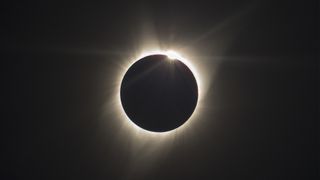
Dial in your settings
For most of a total solar eclipse, and for the duration of an annular or partial eclipse, your settings will remain unchanged.
- Make sure VR/IS is turned off. Vibration reduction or image stabilization is not required while on a tripod. In fact, leaving it turned on will certainly result in a poorer image because your lens will be hunting for motion that isn't there.
- Use aperture priority mode. Here you select an aperture to remain fixed throughout your shoot. Experiment beforehand to establish where your lens is sharpest and has the least chromatic aberration. Somewhere between f/5.6 and f/8 is the sweet spot on many lenses.
- Choose an appropriate ISO. Too low, and the shutter speed required will be too long. Too high, and you'll introduce unnecessary noise. You should aim for a base exposure between 1/100s and 1/500s, depending on focal length.
- Shoot raw. This allows you to capture a greater dynamic range and provides more data to play with during the editing process.
- Choose spot metering as your metering mode because your entire frame is going to be dark apart from the sun. Meter on the Sun before the event begins.
- You may wish to bracket your exposures. This is a technique where you take a sequence of images in quick succession, some correctly exposed, some overexposed and some underexposed. Most DSLR and mirrorless cameras have this feature built-in to take between three and nine images with various increments of exposure. If some cloud obscures your view, you will lose some light, but by bracketing your exposures, you should still come away with a well-exposed image in the sequence. As you're shooting in aperture priority with a fixed ISO, your camera will compensate by increasing and decreasing the shutter speed for the other frames in the sequence.

As the eclipse progresses, the amount of light reaching your camera's sensor will gradually decrease, meaning you may need to increase your ISO as totality approaches.
Shooting totality
Totality begins and ends with the 'diamond ring' effect. Once the diamond ring has gone, the magical moment of totality has arrived. The world around you has been plunged into darkness, but this also means some quick changes are required to continue shooting.
- Remove your solar filter. It is not needed during totality. You can remove your solar glasses too.
- Adjust your ISO. You should now be able to return to a lower ISO while the filter is off.
- Bracket your shots if you weren't already. There is a vast dynamic range in the sun's corona, meaning that by taking rapid-fire shots with different exposures, later you can choose the one that looks best. This isn't the time to experiment, so use technology to make things easier for you.
Nothing else needs to be changed at this point. Do not adjust your focus or aperture.
Practice makes perfect
The techniques mentioned above can be difficult to master, and you don't want to waste precious time during the eclipse on trial and error. However, there are other ways you can hone your telephoto methods to perfection long before the big day.
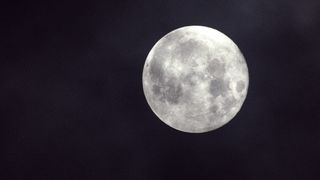
Shoot the moon
You won't need a solar filter for this because the moon is many orders of magnitude dimmer than the sun. However, the principles are the same. You can use this exercise to determine the focal length that works for you, and you will get valuable experience of how quickly the moon moves through the frame when shooting at a long focal length.
If you need some guidance, we have a guide that goes into detail on how to photograph the moon. Once you're confidently capturing a full moon on its own, why not try some other shots such as:
- Other moon phases — a crescent moon is comparable in brightness to the Sun's corona during totality
- Juxtaposing the moon with a foreground element
- Capturing the moon at moonrise/moonset
Join our Space Forums to keep talking space on the latest missions, night sky and more! And if you have a news tip, correction or comment, let us know at: community@space.com.
Get the Space.com Newsletter
Breaking space news, the latest updates on rocket launches, skywatching events and more!
Mathew Browne is a photographer from south Wales with a particular interest in photographing the night sky. He is a product developer for Skylum Software and the founder of the photo location discovery app PhotoHound.
- Jase Parnell-BrookesChannel Editor
- Jamie CarterContributing Writer